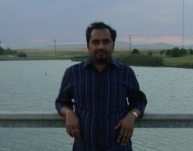How poor is poor enough? If you ask this question to the Planning Commission of India, you might be highly disappointed at the response. Many of India's poor die out of hunger and because they don't have acceptable housing. Some of India's poor even live in railway platforms, an example of the 78 million Indians who lack proper housing facilities. Still, according to the Indian Planning Commission's criteria on what classifies as a poor person, many of these individuals may not be considered poor enough to be considered as living below poverty line (BPL).
Poverty is a widespread and well-acknowledged problem in India. To know how poor India is you need simply to look at the people and the places around and you will have good grasp of the situation. However, when it comes to the government accounts, the abjectness of the poverty situation seems to be grossly underestimated and even ignored in many circumstances.
Reacting to a petition by Peoples' Union of Civil Liberties , the Supreme Court of India recently asked the Planning Commission to fix the problem. The court also challenged the Commissions approach to estimating poverty level among the masses. As the Economic Times reported , "The Supreme Court slammed the Planning Commission, asking its Deputy Chairman Montek Singh Ahluwalia to explain how the percentage of people living below poverty line (BPL) fixed at 36 percent and how has their purchasing power remained unchanged since 1991."
Responding to the apex court's queries, the Planning Commission disclosed its criteria for determining a poor . According to the Commission, an urban Indian spending more than Rs 578 a month ($13) - roughly Rs 20 (less than 50 cents) a day would exceed its limit for the poverty line. The figures are even lower for rural India. If a villager spends more than 15 rupees a day on the entire gamut of basic needs including food, clothing, and shelter - the villager cannot be termed as poor enough and will not be entitled to receive benefits meant for poor.
The Planning Commission's criteria of daily spending of less than 50 cents as an indicator for poverty not only shows their lack of concern for people but also shows their unawareness about the cost of living in the country. How can a person afford a nutrition content of 2400 calories , a minimum requirement for the rural India, from a meager 15 rupees (about 35 cents)?
Where members of the Planning Commission would be spending Rupees 1500 to 2000 (nearly $ 40) a day, if the other guys can spend merely a hundredth of what they spend, the latter ceases to be poor! It seems quite strange how a body like the Planning Commission of India could come up with such unrealistic criteria for persons living within the BPL level.
This criterion grossly underestimates or rather ignores other expenses like housing, clothing, and medication. Where in Urban India one can find housing for less than Rs 600 ($ 14) given the rent of an average house is no less than Rs 3000 ($ 65) a month? The Planning Commission fails to account for the very basic amenities of life for the poor. This is highly disappointing, as the criteria for deciding BPL fail to capture the cost of bare minimum amenities for survival.
If we push the criterion up to the international standard spending of $ 1.25 (PPP adjusted) a day, the Planning Commission estimates about 45% of the Indian population is extremely poor. If the daily income per head is $ 2 then the family is described as poor and about 80 percent of Indian Population is poor by this criterion.
Comparing these figures with the developed nations, we can understand the relevance of the BPL criteria. United States, for instance, has hardly anyone living below this spending level of a dollar or two per day. The USA follows its own national poverty line, an income over $26000 a year for a family of 5, which is well above the international line of $ 1.25 a day.
So what can one think of the Planning Commission's stand: Is it sheer ignorance of the reality or a calculated strategic measure? If the level of poverty can't be reduced, lower the criteria to such an extent that most of the poverty will remain underestimated and hence unreported and ultimately, the problem will be ignored or at least it will not draw as much attention as it otherwise would.
But not everyone is as ignorant as the planning Commission's statisticians. The Supreme Court once again has noticed the inadequacy of the criteria for measuring the BPL level. The Court has directed the commission to re-evaluate its criteria for measuring poverty across the nation.
Thanks to the Supreme Court for intervening in this case. Otherwise, poor people would be dying hungry and shelter-less, while the Planning Commission would say they are not poor enough!





